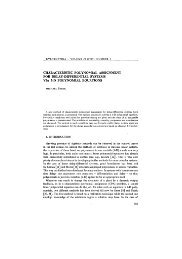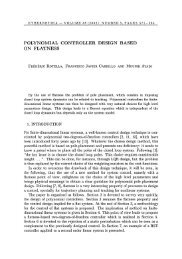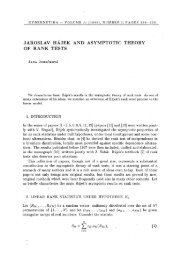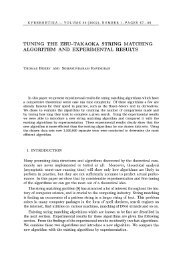n - Kybernetika
n - Kybernetika
n - Kybernetika
Create successful ePaper yourself
Turn your PDF publications into a flip-book with our unique Google optimized e-Paper software.
The Hajek Asymptotics for Finite Population Sampling and Their Ramifications 261<br />
7T. = Pi] TTij = PiPj , i ^ j = 1, . . . , N. (3.6)<br />
The Poisson Sampling leads to a unified way of presenting some other sampling<br />
methods including the rejective sampling and successi /e sampling schemes. Professor<br />
Hajek made outstanding contributions in this field too (see Hajek [8]).<br />
Rejective Sampling (Hajek [8]) may be defined either as conditional Poisson Sampling<br />
or as conditional sampling with replacement. We let here<br />
P(s)=<br />
f «*n,e.«(. if#S = n;<br />
(37)<br />
n<br />
ti,<br />
[ 0, otherwise,<br />
where oc\,..., a AT are positive numbers and £)i-_i a i = T c * > 0- The probability<br />
a; of selecting the unit i in individual draws has been termed by Hajek ([12], p. 67)<br />
the drawing probability. For some unified treatment of rejective sampling, we refer<br />
to Hajek ([12], Ch. 7). In the Sampford-Durbin modification of rejective sampling<br />
there is a two-phase scheme: The first unit is drawn with the drawing probabilities<br />
a,- (1) = n _1 7ri, 1 < i < N, (3.8)<br />
while the remaining n — 1 units are drawn with drawing probabilities<br />
a i( t) = \7Ti(l - Hi)' 1 , 1 < i < N, A > 0. (3.9)<br />
In this scheme, the inclusion probabilities are exactly equal to 7r,- if A is so chosen.<br />
Successive Sampling consists of a sequence of independent draws of one unit with<br />
some constant probabilities ai,..., a^: J2i






